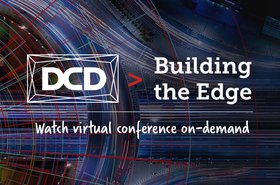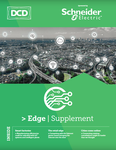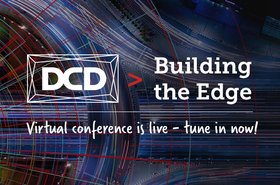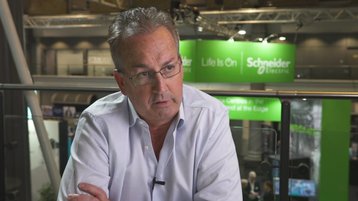The Covid-19 pandemic is likely to accelerate business change by 12 to 18 months, reducing human involvement and increasing the use of Edge resources, DCD's Building The Edge event heard today.
Businesses are transforming to digital operations, which are more automated and which handle much more data - and that change has been sped up by the pandemic which has required people to stay home, according to entrepreneur Mark Thiele's keynote for the event, which takes place as a series of webinars and online meetings today and tomorrow.
People are the constraint
"The bad news for those who are slow at adopting, is the pandemic is likely to accelerate change curve by more than 12 to 18 months," said Thiele, who is CEO at startup Edgevana, and has previously worked at organizations including Ericsson, Switch, HP and VMware. "If you had five years to make the change before, you have three-and-a-half years now."
Businesses are transforming to communicate with partners and customers digitally, and this means working in real time and with less human resources, he said.
"Visualize a team of executives around a virtual table," said Thiele. "The CEO asks his or her C-suite 'What’s our biggest constraint to how we manage through this pandemic?' At least one person around the table will raise their hand and says ‘well it’s people,' and the CEO will say, ‘yes, that’s right, people are our constraint."
This means that companies who want to minimize the impact of events like the pandemic, should be automating, and operating with less human resources: "When businesses see roadblocks, their first objective is to get past that roadblock. If people are slowing that process, then people will get moved, or changed, or removed. Like it or not, we’re probably going to be looking for ways to limit human involvement as much as possible."
In business transformation, customers are integrated into the business process, said Thiele, quoting an anecdote about how Elon Musk demands new features in his Tesla cars, based on Twitter feedback from users. Although Edge computing is usually defined in terms of ways to reduce latency in connecting to people and devices, it is actually a way to facilitate that integration, of customers into the business process, he said.: "Edge computing is the way for the enterprise to reach out and get feedback back from the customer."
Edge computing breaks many of the assumptions of previous data center builders, but the industry needs to find new ways to build it because it is necessary, said Thiele. Listing the assumptions made by a data center builder, he said. "I need access to a power, substation, I need fans in my servers. I need to handle remote repairs, I need space for people to walk in, and I need to keep the temperature. None of these are true. We need to work around our historical assumptions."
We don't need to "extend a traditional data center into a smaller footprint, but rather extend something entirely different, that can be as cost effective as a centralized data center," he said. "And you can assume you'll have to do it without people."
Among the ways to "remove humans from the equation," he suggested that Edge equipment should be so "dumbed down" that UPS drivers delivering new equipment should be qualified to install it as well.
For more from Day One of Building the Edge, follow our Live Blog
More from DCD
-

Broadcast DCD>Building the Edge VIRTUAL
-

-

Event News Live Blog: Building the Edge Day 1

